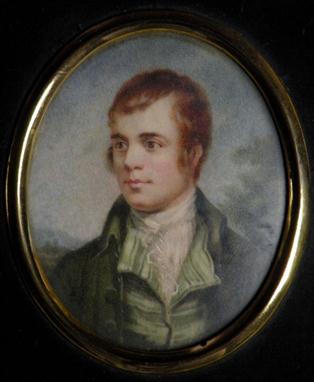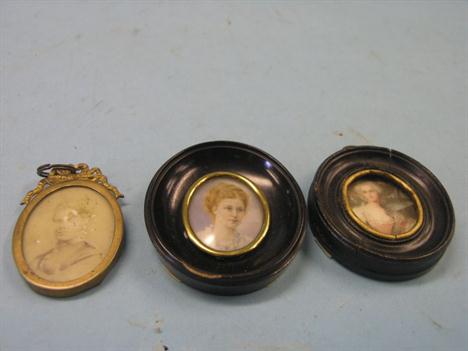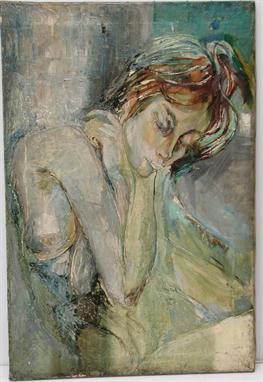283287 Preisdatenbank Los(e) gefunden, die Ihrer Suche entsprechen
283287 Lose gefunden, die zu Ihrer Suche passen. Abonnieren Sie die Preisdatenbank, um sofortigen Zugriff auf alle Dienstleistungen der Preisdatenbank zu haben.
Preisdatenbank abonnieren- Liste
- Galerie
-
283287 Los(e)/Seite
PHILLIPPE JULLIAN (1919-1977) "Portrait francais-study of an artist seated on a salon chair with paintbrush and artist`s board at hand alongside a console table, sketching a painting of a woman in 18th Century dress", pen, ink and watercolour, 26 cm x 13.5 cm, bearing "The Trafford Gallery, 119 Mount Street London W1 Gallery" label verso (ILLUSTRATED BELOW LEFT)
19TH CENTURY CONTINENTAL SCHOOL "Mother and child in a garden, a basket resting on the ground", "Christ, a portrait study in profile, head and shoulders", "Portrait study of a lady wearing a yellow cloak with plaited hair", watercolours, a set of three, a set of eight various topographical black and white engravings, mounted on card, ENGLISH SCHOOL "Study of two rabbits crouching in grasses", pencil, another similar and nine various pen, ink and black and white prints
19TH CENTURY ENGLISH SCHOOL "Portrait of a gentleman seated in a leather backed library chair wearing a black coat and waistcoat with white ruff", and "A lady seated on a crimson upholstered sofa wearing a black lace trimmed dress, lace bonnet and ermine scarf", portrait studies, half lengths, oil on canvas, each contained within elaborate giltwood and gesso shell and C scroll decorated frames, 73 cm x 91 cm
Paul Swan, American School, 1883-1972 `Portrait of Isadora Duncan wearing a blue dress and coloured bead necklace, three quarter length` oil on canvas, signed and dated `22 100cm x 71.5cm Provenance Gift of the artist to Salvatore Cartaino Scarpitta (1887-1948) Enrico Saccone The flamboyant artist and dancer Paul Spencer Swan (1883-1972) had a tempestuous relationship with Isadora Duncan. They first met in Paris where Duncan had moved in 1900. She described Swan famously as `the most beautiful man in the world`. Isadora Duncan completely transformed the concept of ballet, rejecting classical ballet as `ugly and against nature` she introduced the idea of improvisation emphasising emotion and the human form. She gained international fame and became the inspiration for many artists and designers of the day. Such was her fame that by 1913 a portrait of the dancer by sculptor Antoine Bordelle was placed over the entrance of the newly built Theatre des Champs-Elysees. Paul Swan shared Duncan`s philosophy of self- expression both in his work of dancer and artist and in his Bohemian style private life. Both he and Duncan were self confessed bisexuals. It is very probable that they were in sexual relationship however Duncan`s whirlwind personality drew many admirers close only to be dropped again just as quickly. It is alleged that the sculptor Scarpitta made a social visit to Swan`s studio in Los Angeles to find the artist raging before his portrait of Isadora and about to paint it out. Swan had modelled for Scarpitta on many occasions and the two artists were great friends. The sculptor, recognizing the importance of the portrait, persuaded Swan to part with the picture in return for several litres of wine and thus it was saved. The picture remained with the Scarpitta family for many years before being purchased by the present vendor Enrico Seccone. Salvatore Scarpitta had worked on The Victor Emmanuel monument in Rome for the architect Count Giuseppe Seccone (1854 - 1905), the vendor`s grandfather. Reference: Londraville, Janis and Richard - `The Most Beautiful Man in the World - Paul Swan `, published by The University of Nebraska Press, 2006
Miss Caroline Burland Yates, fl.1879-1887 `Her favourite doll`, signed and dated 1887, 76.5cm x 51cm Caroline Burland Yates studied at the Slade School in London where she met her future husband Thomas Cooper Gotch (1854-1931) whom she married in 1881. Leaving London, the couple settled in Cornwall and became prominent members of the Newlyn School. It is likely that this portrait depicts the artist`s daughter Phyllis Marian Gotch who was born in 1882.
An early Victorian oak sideboard incorporating early and late 17th century carved timbers, single, long frieze drawer carved with leaf scrolls and bearing date 1697, stiles carved with bearded portrait busts and Ionic capitals, sides with carved and monogrammed cartouches, open base with two adjustable shelves, 6ft. wide
-
283287 Los(e)/Seite










































